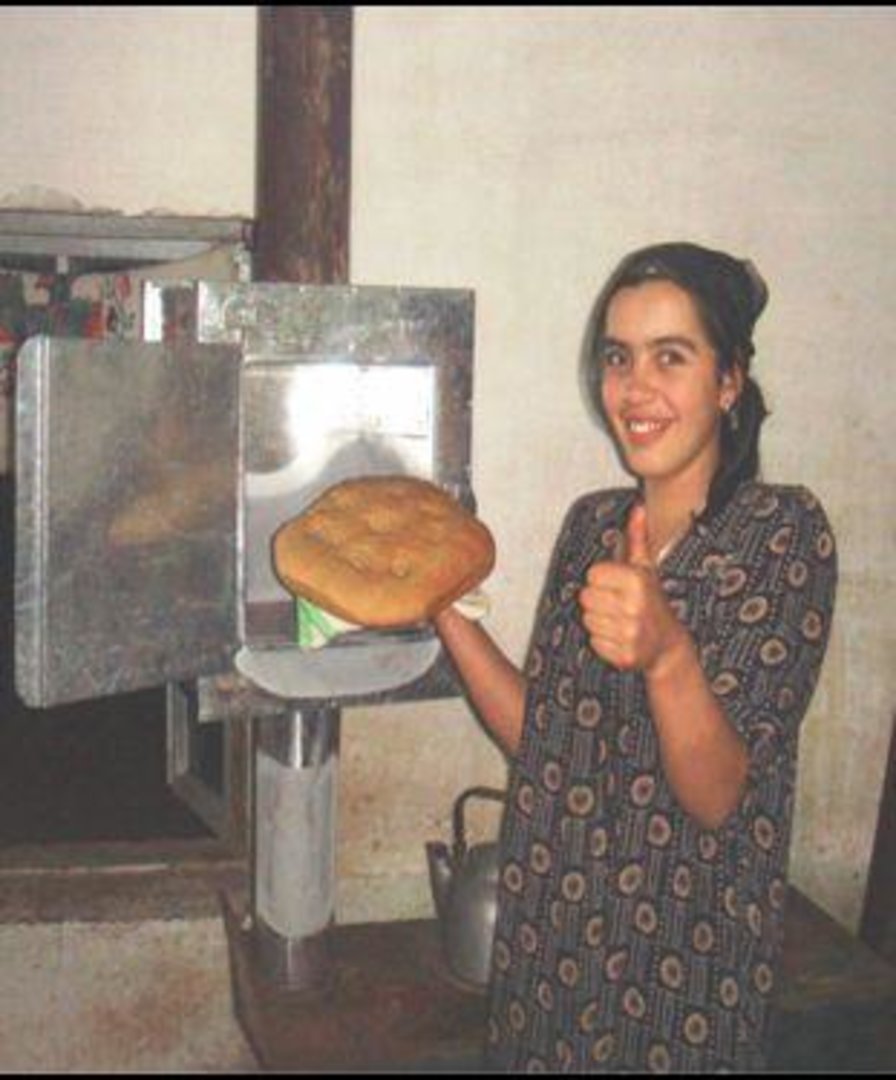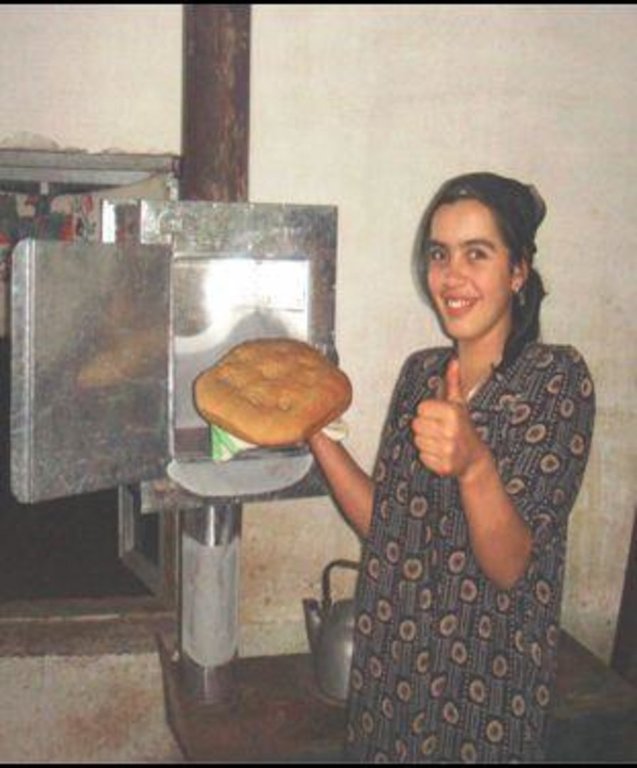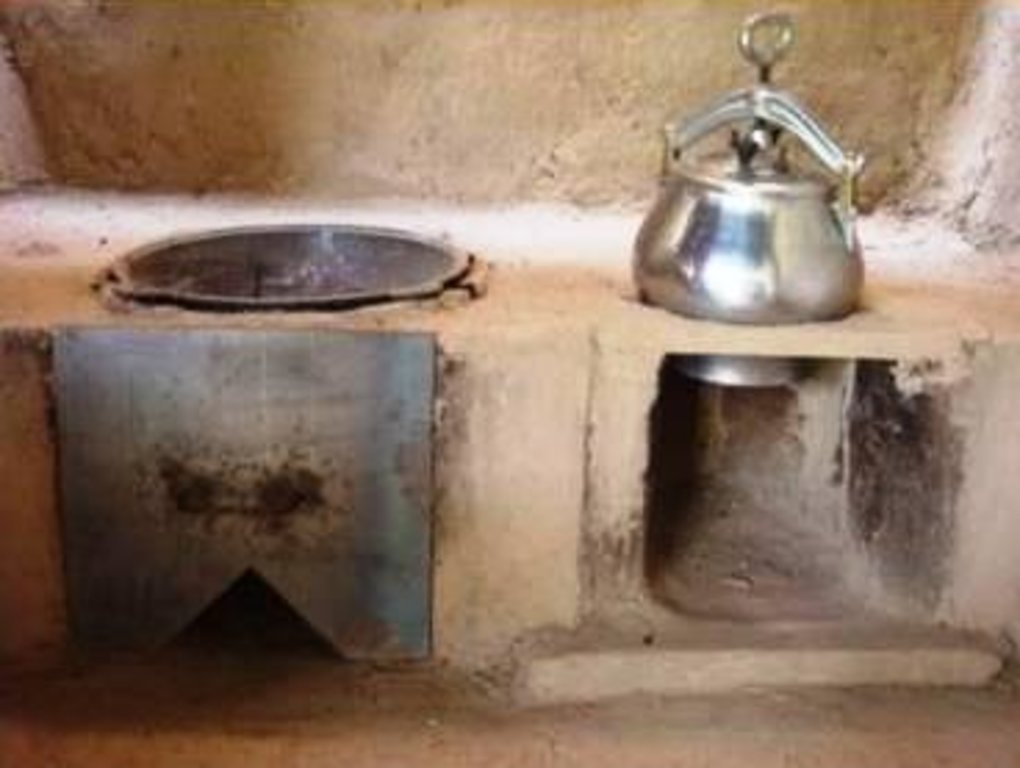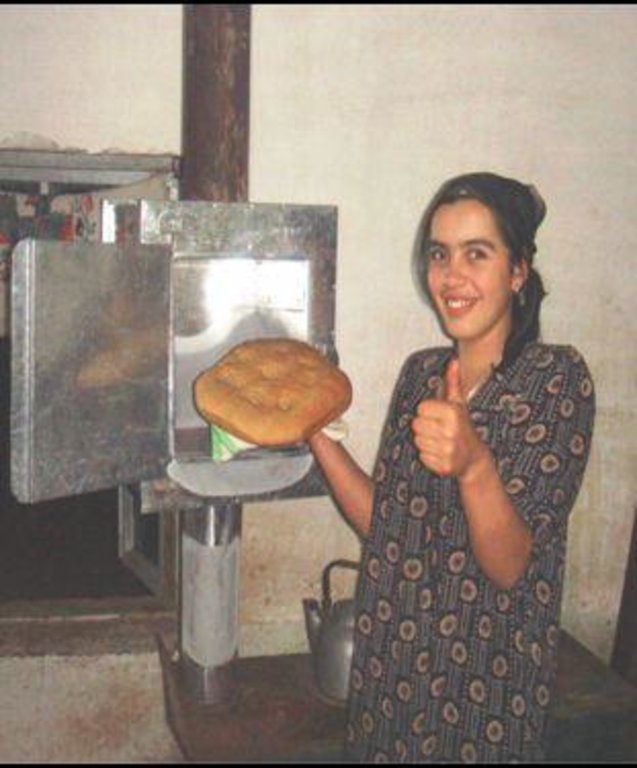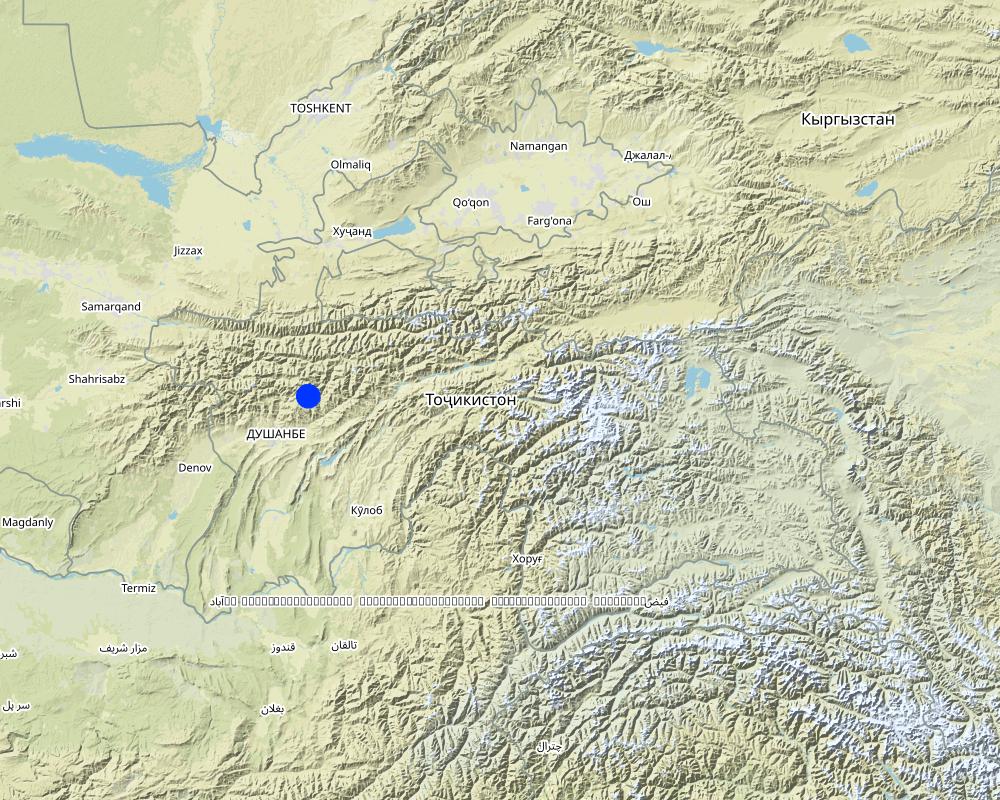Energy efficiency measures to increase the application of organic fertilisers. [Tayikistán]
- Creación:
- Actualización:
- Compilador: Daler Domullojonov
- Editor: –
- Revisores: Laura Ebneter, Alexandra Gavilano, Fabian Ottiger, Joana Eichenberger
Бехтар намудани хосилнокии замин ба воситаи амалигардонии чорахои самаранокии истифодабарии неру
technologies_1050 - Tayikistán
- Resumen completo en PDF
- Resumen completo en PDF para imprimir
- Resumen completo en el navegador
- Resumen completo (sin formato)
- Energy efficiency measures to increase the application of organic fertilisers.: 2 de noviembre de 2021 (public)
- Energy efficiency measures to increase the application of organic fertilisers.: 14 de agosto de 2019 (inactive)
- Energy efficiency measures to increase the application of organic fertilisers.: 21 de julio de 2017 (inactive)
- Energy efficiency measures to increase the application of organic fertilisers.: 2 de junio de 2017 (inactive)
- Energy efficiency measures to increase the application of organic fertilisers.: 31 de mayo de 2017 (inactive)
- Energy efficiency measures to increase the application of organic fertilisers.: 27 de diciembre de 2016 (inactive)
Visualizar secciones
Expandir todo Colapsar todos1. Información general
1.2 Detalles de contacto de las personas de referencia e instituciones involucradas en la evaluación y la documentación de la Tecnología
Persona(s) de referencia clave
Especialista MST:
Hafizova Tahmina
Welthungerhilfe
Alemania
Especialista MST:
Olimov Nazarmad
Welthungerhilfe
Alemania
Nombre del proyecto que financió la documentación/ evaluación de la Tecnología (si fuera relevante)
Pilot Program for Climate Resilience, Tajikistan (WB / PPCR)Nombre de la(s) institución(es) que facilitaron la documentación/ evaluación de la Tecnología (si fuera relevante)
Welthungerhilfe (Welthungerhilfe) - Tayikistán1.3 Condiciones referidas al uso de datos documentados mediante WOCAT
El compilador y la/s persona(s) de referencia claves aceptan las condiciones acerca del uso de los datos documentados mediante WOCAT:
Sí
1.5 Referencia al (los) Cuestionario(s) de Enfoques MST (documentados usando WOCAT)
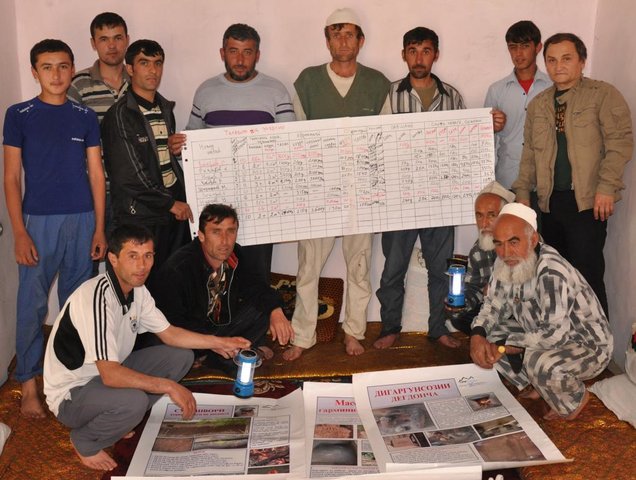
Participatory Cost Benefit Analysis for Energy Efficiency Measures [Tayikistán]
The use of a cost benefit analysis approach to assess the financial and natural resource needs for energy consumption at community level, and further attribute costs to SLM practices to meet this need, and subsequently improve rural livelihoods.
- Compilador: shane stevenson
2. Descripción de la Tecnología MST
2.1 Breve descripción de la Tecnología
Definición de la Tecnología:
The implementation of several low cost energy efficiency measures to reduce the amount of organic material used as fuel within rural households.
2.2 Descripción detallada de la Tecnología
Descripción:
In many cases local inhabitants of rural areas depend heavily on locally available natural resources, contributing to, and accelerating deforestation. As a low cost fuel source, local households often use cow-dung and wood. Taking these from the local area contributes to decreased soil fertility and erosion processes. Most of the dung collected from livestock is burnt in a very inefficient manner for cooking, baking and heating purposes. Based upon assessments by Welthungerhilfe in 600 households (HH) who were using cow dung as the only fuel material, on average one HH uses 4.6 tons of cow dung annually when using traditional cooking stoves, 6 tons for heating and 4.5 tons for bread baking. This means almost 15.1 tons of cow dung is burnt annually per HH.
Using a simple modification of the traditional cooking stove, approximately 50 - 60% or 2.3 tons of fuel material can be saved. This saving can be further increased by the utilisation of a pressure cooker that decreases the cooking time by 50%. Not all local hot meals can be cooked with a pressure cooker but it can contribute to an additional saving of 0.7 ton of organic matter.
The introduction of a metal heat exchanger on the exhaust pipe of a cast iron stove can help save a household 3 tons of fuel material per year, the effectiveness can be further increased by the incorporation of bread baking compartment.
Further savings can be made by using straw, mud and wood to improve the thermal insulation of the exterior walls, ceiling and floor in the house.
Through the integration of all above measures approx 60% of the current usage rates of organic material used for fuel can be saved. In addition it will keep the house warmer for longer, reduce the smoke in the air, and help retain organic material in the soil.
Purpose of the Technology: The main objective of the energy efficiency technology is to address one of the root causes of the deforestation process and to improve soil fertility i.e. to decrease the demand from the local population for organic fuel. This project used a range of technologies to address this issue which in combination provided substantial savings in organic fuel.
Establishment / maintenance activities and inputs: Cooking stoves: For centuries local populations have been using traditional cooking stoves for cooking, especially during the warm seasons of the year. These were made from a mixture of mud and straw. The modification of these involves improving the aeration process during the burning of the fuel. This is achieved by putting a metallic cover with one inflow cutting and six small smoke outflow holes surrounding the cooking pot. The only input needed which is not locally available is the metallic cover.
Pressure cookers: As maintenance is required 1-2 times per season to keep the cooking stove functioning efficiently, the utilisation of pressure cookers can be easily integrated with the modified cooking stoves.
Heat exchangers: The heat exchangers installed on top of the iron ovens, can be produced by local tradesmen and need to be cleaned every 1-2 months. They have to be installed before the start of the winter season when the heating is needed.
House installation: The house insulation, using locally available materials does not need maintenance once it is installed. However, the storage of dry fruits or bread in the attic should be avoided as it could attract mice which can destroy the insulation.
Welhungerhilfe provided subsidies for all the above work, except for the heat exchangers.
Natural / human environment: The geographical area served by the project is mainly hill slopes, covered in low grade pasture fodder with wheat crops planted in loess soil. Although the soils have the potential to be very fertile, they are overused and not well managed and thus have become degraded and denuded. One of the main contributing factors to this is the removal of organic material from the biomass cycle. Trees, bushes and organic material is cut and collected to be used as fuel.
The main source of income in the area is from semi-subsistence farming, and the removal of organic material has a significant impact on their crops and livestock.
The houses are made from concrete foundations and mud bricks, these and the current stoves are all energy inefficient and fail to retain heat.
2.3 Fotografías de la Tecnología
2.5 País/ región/ lugares donde la Tecnología fue aplicada y que se hallan comprendidos por esta evaluación
País:
Tayikistán
Región/ Estado/ Provincia:
Tajikistan / Khatlon
Especifique más el lugar :
Temurmalik . Davad
Especifique la difusión de la Tecnología:
- distribuida parejamente sobre un área
Si se desconoce el área precisa, indique el área aproximada cubierta:
- > 10,000 km2
Comentarios:
Several energy efficiency measures were implemented by households in three neighbouring districts; Baljuvon, Temurmalik and Khovaling. These included the following: cooking stoves were modified in 1,924 HHs (households), pressure cookers were used in 132 HHS, heat exchangers were used in 569 HHs, improved house insulation in 850 HHs, and group bread baking - 10 groups (average of 10 families in each group).
Map
×2.6 Fecha de la implementación
Si no se conoce el año preciso, indique la fecha aproximada:
- hace menos de 10 años (recientemente)
2.7 Introducción de la Tecnología
Especifique cómo se introdujo la Tecnología:
- mediante proyectos/ intervenciones externas
Comentarios (tipo de proyecto, etc.):
Promotion of energy efficiency measures began in 2007 by Welthungerhilfe projects
3. Clasificación de la Tecnología MST
3.2 Tipo(s) actuales de uso de la tierra donde se aplica la Tecnología

Tierras cultivadas
- Cosecha anual
- Cosecha de árboles y arbustos
Cosechas anuales - Especifique cultivos:
- cereales - trigo (verano)
- cultivos para forraje - otros
Número de temporadas de cultivo por año:
- 1
Especifique:
Longest growing period in days: 220Longest growing period from month to month: march - october

asentamientos, infraestructura
Comentarios:
Major land use problems (compiler’s opinion): The land in rural Tajikistan is becomming denuded due to the pressure for organic fertilisers used as a source of fuel for heating and cooking. This impacts on soil quailty, yields and soil stability. This issue is compounded by the relatively high price of mineral fertilisers.
Major land use problems (land users’ perception): Crop yields decrease.
3.6 Medidas MST que componen la Tecnología

medidas agronómicas
- A2: materia orgánica/ fertilidad del suelo

medidas estructurales
- S11: Otros
Comentarios:
Main measures: structural measures
3.7 Principales tipos de degradación del suelo encarados con la Tecnología

deterioro químico del suelo
- Cn: reducción de la fertilidad y contenido reducido de la materia orgánica del suelo (no ocasionados por la erosión)

deterioro físico del suelo
- Pc: compactación
Comentarios:
Main type of degradation addressed: Cn: fertility decline and reduced organic matter content
Secondary types of degradation addressed: Pc: compaction
Main causes of degradation: soil management (poor ploughing practices), deforestation / removal of natural vegetation (incl. forest fires) (deforestation), over-exploitation of vegetation for domestic use (removal of trees and bushes for fuel pruposes.), overgrazing (imbalance of carrying capacity and size of livestock herds.), disturbance of water cycle (infiltration / runoff) (reduced infiltration capacity.), poverty / wealth (local population have restricted funds)
Secondary causes of degradation: crop management (annual, perennial, tree/shrub) (monoculture), change of seasonal rainfall (more intensive heavy rainfall events), droughts (events occuring more frequently), population pressure (population is increasing), labour availability (external labour migration)
3.8 Prevención, reducción o restauración de la degradación del suelo
Especifique la meta de la Tecnología con relación a la degradación de la tierra:
- prevenir la degradación del suelo
- reducir la degradación del suelo
Comentarios:
Main goals: prevention of land degradation
Secondary goals: mitigation / reduction of land degradation
4. Especificaciones técnicas, actividades de implementación, insumos y costos
4.1 Dibujo técnico de la Tecnología
Especificaciones técnicas (relacionadas al dibujo técnico):
Heat exchanger adopted by Welthungerhilfe, promoted in communities of the Khatlon region of Tajikistan.
Location: Temurmalik, Baljuvon and Khovaling districts. Khatlon region / Tajikistan
Date: September, 2009
Technical knowledge required for field staff / advisors: high (promotion of EE measures)
Technical knowledge required for land users: moderate (cooking stove modification and use of pressure cookers, mainly by females)
Technical knowledge required for Local masters: high (for construction of heat exchangers and improving house thermal insulation)
Main technical functions: increase in organic matter
Secondary technical functions: improvement of topsoil structure (compaction), increase of infiltration, increase of biomass (quantity)
Structural measure: cook stove
Structural measure: House insulation
Structural measure: Presure cooker
Structural measure: Heat exchanger
Autor:
Daler Domullojonov, 14, Giprozem street, app. 27, Dushanbe, Tajikistan
4.2 Información general sobre el cálculo de insumos y costos
otra / moneda nacional (especifique):
TJS
Si fuera relevante, indique la tasa de cambio de dólares americanos a la moneda local (ej. 1 U$ = 79.9 Reales Brasileros): 1 U$ =:
4,5
Indique el costo promedio del salario de trabajo contratado por día:
11.00
4.3 Actividades de establecimiento
| Actividad | Momento (estación) | |
|---|---|---|
| 1. | Cook stove modification | any |
| 2. | Pressure cooker | any |
| 3. | House insulation | once in the beginning |
| 4. | heat exchanger | once in the beginning |
4.4 Costos e insumos necesarios para el establecimiento
| Especifique insumo | Unidad | Cantidad | Costos por unidad | Costos totales por insumo | % de los costos cubiertos por los usuarios de las tierras | |
|---|---|---|---|---|---|---|
| Mano de obra | Labour | per stove | 1,0 | 5,5 | 5,5 | 100,0 |
| Mano de obra | Labour | per room | 1,0 | 37,8 | 37,8 | 100,0 |
| Material para plantas | Wheat straw | bales | 12,0 | 4,9 | 58,8 | 100,0 |
| Material de construcción | Metallic cover | per stove | 1,0 | 5,1 | 5,1 | 34,0 |
| Material de construcción | Earth | per stove | 1,0 | 0,5 | 0,5 | 100,0 |
| Material de construcción | Wooden lath | per room | 1,0 | 72,0 | 72,0 | 15,0 |
| Material de construcción | Nail, lime, brush, emalen | per room | 1,0 | 30,75 | 30,75 | 100,0 |
| Material de construcción | Veneer and glueing silicone | per room | 1,0 | 43,8 | 43,8 | 100,0 |
| Otros | Pressure cooker | piece | 1,0 | 22,2 | 22,2 | 80,0 |
| Otros | heat exchanger | per stove | 1,0 | 30,0 | 30,0 | 100,0 |
| Otros | Transportation cost | 1,0 | 44,0 | 44,0 | 100,0 | |
| Costos totales para establecer la Tecnología | 350,45 | |||||
| Costos totales para establecer la Tecnología en USD | 77,88 | |||||
Comentarios:
Duration of establishment phase: 12 month(s)
4.5 Actividades de establecimiento/ recurrentes
| Actividad | Momento/ frequencia | |
|---|---|---|
| 1. | adjustment of modified cook stove | twice per year |
| 2. | cleaning of heat exchanger | twice per year |
4.6 Costos e insumos necesarios para actividades de mantenimiento/ recurrentes (por año)
| Especifique insumo | Unidad | Cantidad | Costos por unidad | Costos totales por insumo | % de los costos cubiertos por los usuarios de las tierras | |
|---|---|---|---|---|---|---|
| Mano de obra | Labour | per stove | 1,0 | 3,3 | 3,3 | 100,0 |
| Indique los costos totales para mantenecer la Tecnología | 3,3 | |||||
| Costos totales para mantener la Tecnología en USD | 0,73 | |||||
Comentarios:
Machinery/ tools: brush
The costs are based upon 2010 prices.
4.7 Factores más determinantes que afectan los costos:
Describa los factores más determinantes que afectan los costos:
The price of the construction materials are dependent on many different external factors, and prices are generally increasing seasonally and annually.
5. Entorno natural y humano
5.1 Clima
Lluvia anual
- < 250 mm
- 251-500 mm
- 501-750 mm
- 751-1,000 mm
- 1,001-1,500 mm
- 1,501-2,000 mm
- 2,001-3,000 mm
- 3,001-4,000 mm
- > 4,000 mm
Zona agroclimática
- semi-árida
Thermal climate class: temperate. 3 months below 5 degrees, 7 months above 10 degrees
5.2 Topografía
Pendientes en promedio:
- plana (0-2 %)
- ligera (3-5%)
- moderada (6-10%)
- ondulada (11-15%)
- accidentada (16-30%)
- empinada (31-60%)
- muy empinada (>60%)
Formaciones telúricas:
- meseta/ planicies
- cordilleras
- laderas montañosas
- laderas de cerro
- pies de monte
- fondo del valle
Zona altitudinal:
- 0-100 m s.n.m.
- 101-500 m s.n.m.
- 501-1,000 m s.n.m
- 1,001-1,500 m s.n.m
- 1,501-2,000 m s.n.m
- 2,001-2,500 m s.n.m
- 2,501-3,000 m s.n.m
- 3,001-4,000 m s.n.m
- > 4,000 m s.n.m
5.3 Suelos
Profundidad promedio del suelo:
- muy superficial (0-20 cm)
- superficial (21-50 cm)
- moderadamente profunda (51-80 cm)
- profunda (81-120 cm)
- muy profunda (>120 cm)
Textura del suelo (capa arable):
- mediana (limosa)
Materia orgánica de capa arable:
- media (1-3%)
5.4 Disponibilidad y calidad de agua
Agua subterránea:
> 50 m
Disponibilidad de aguas superficiales:
mediana
Calidad de agua (sin tratar):
inutilizable
5.5 Biodiversidad
Comentarios y especificaciones adicionales sobre biodiversidad:
Species diversity: medium, low
5.6 Las características de los usuarios de la tierra que aplican la Tecnología
Ingresos no agrarios:
- 10-50% de todo el ingreso
Nivel relativo de riqueza:
- muy pobre
- pobre
Individuos o grupos:
- individual/ doméstico
Género:
- mujeres
- hombres
Indique otras características relevantes de los usuarios de las tierras:
Land users applying the Technology are mainly common / average land users
Population density: 10-50 persons/km2
Annual population growth: 1% - 2%
90% of the land users are poor.
10% of the land users are poor.
Off-farm income specification: local inhabitants are in many cases dependent on remittances from Russia and other income generating activities.
5.7 Área promedio de la tierra usada por usuarios de tierra que aplican la Tecnología
- < 0.5 ha
- 0.5-1 ha
- 1-2 ha
- 2-5 ha
- 5-15 ha
- 15-50 ha
- 50-100 ha
- 100-500 ha
- 500-1,000 ha
- 1,000-10,000 ha
- > 10,000 ha
¿Esto se considera de pequeña, mediana o gran escala (refiriéndose al contexto local)?
- pequeña escala
5.8 Tenencia de tierra, uso de tierra y derechos de uso de agua
Tenencia de tierra:
- estado
Comentarios:
There are a variety of land user and water rights within the three districts, but they do not directly affect the implementation of the technologies.
5.9 Acceso a servicios e infraestructura
salud:
- pobre
- moderado
- bueno
educación:
- pobre
- moderado
- bueno
asistencia técnica:
- pobre
- moderado
- bueno
empleo (ej. fuera de la granja):
- pobre
- moderado
- bueno
mercados:
- pobre
- moderado
- bueno
energía:
- pobre
- moderado
- bueno
caminos y transporte:
- pobre
- moderado
- bueno
agua potable y saneamiento:
- pobre
- moderado
- bueno
servicios financieros:
- pobre
- moderado
- bueno
6. Impactos y comentarios para concluir
6.1 Impactos in situ demostrados por la Tecnología
Impactos socioeconómicos
Producción
producción de cultivo
Cantidad antes de MST:
12 t/ha
Cantidad luego de MST:
21 t/ ha
riesgo de fracaso de producción
Ingreso y costos
gastos en insumos agrícolas
ingreso agrario
Cantidad antes de MST:
TJS 100
Cantidad luego de MST:
TJS 1200
Impactos socioculturales
seguridad alimentaria/ autosuficiencia
situación de salud
mitigación de conflicto
Impactos ecológicos
Suelo
pérdida de suelo
compactación de suelo
Biodiversidad: vegetación, animales
biomasa/ sobre suelo C
Otros impactos ecológicos
reduce fuel costs
warmer houses, health benefits
pressure cooker
Comentarios/ especifique:
Not possible to cook all meals in this
6.3 Exposición y sensibilidad de la Tecnología al cambio climático gradual y a extremos relacionados al clima/ desastres (desde la percepción de los usuarios de tierras)
Cambio climático gradual
Cambio climático gradual
| Estación | Incremento o reducción | ¿Cómo es que la tecnología soporta esto? | |
|---|---|---|---|
| temperatura anual | incrementó | bien |
Extremos (desastres) relacionados al clima
Desastres climatológicos:
| ¿Cómo es que la tecnología soporta esto? | |
|---|---|
| tormenta de lluvia local | no se sabe |
| tormenta de viento | no se sabe |
Desastres climatológicos
| ¿Cómo es que la tecnología soporta esto? | |
|---|---|
| sequía | bien |
Desastres hidrológicos
| ¿Cómo es que la tecnología soporta esto? | |
|---|---|
| inundación general (río) | no se sabe |
Otras consecuencias relacionadas al clima
Otras consecuencias relacionadas al clima
| ¿Cómo es que la tecnología soporta esto? | |
|---|---|
| periodo reducido de crecimiento | bien |
Comentarios:
The thermal could be modified to increase its thermal properties.
6.4 Análisis costo-beneficio
¿Cómo se comparan los beneficios con los costos de establecimiento (desde la perspectiva de los usuarios de tierra)?
Ingresos a corto plazo:
positivo
Ingresos a largo plazo:
muy positivo
¿Cómo se comparan los beneficios con los costos de mantenimiento/ recurrentes (desde la perspectiva de los usuarios de tierra)?
Ingresos a corto plazo:
muy positivo
Ingresos a largo plazo:
muy positivo
Comentarios:
As it uses mainly locally available materials, it is a low cost approach which increases energy efficiency and improves resource use.
6.5 Adopción de la Tecnología
Comentarios:
70% of land user families have adopted the Technology with external material support
1355 land user families have adopted the Technology with external material support
Comments on acceptance with external material support: The amount of the local's contribution to the project themselves was between 52.7% to 100%.
30% of land user families have adopted the Technology without any external material support
569 land user families have adopted the Technology without any external material support
Comments on spontaneous adoption: Fitting heat exchangers, adapting cooking stoves, and improving house thermal insulation are the main forms of technology that have been replicated in the above households.
There is a little trend towards spontaneous adoption of the Technology
Comments on adoption trend: This is restricted due to limited access to funds.
6.7 Fuerzas/ ventajas/ oportunidades de la Tecnología
| Fuerzas/ ventajas/ oportunidades desde la perspectiva del usuario de la tierra |
|---|
|
It is very affordable How can they be sustained / enhanced? By involving local relevant authorities and departments |
| It saves and minimises expenditures for electricity, gas, and firewood procurement |
| The rooms are warmer and I can cook bread inside and save more fuel. |
| Fuerzas/ ventajas/ oportunidades desde la perspectiva del compilador o de otra persona de referencia clave |
|---|
|
It is a low cost measure using locally available materials. The heat exchanger can improve the heating capacity of the room threefold, for example. How can they be sustained / enhanced? replication rates could be increased through promotion to larger audiences with support of local authorities or by law. |
|
It is environmental friendly and increases the amount of organic material that stays within the soil. How can they be sustained / enhanced? There could be further awareness raising of the benefits of keeping organic materials in the soil. |
| It saves time for collecting fire material wood and cow dung. |
| It presents an opportunity to increase land productivity through application of organic fertilisers |
|
The technologies do not have a large initial financial cost and can be implemented progressively as funds become available. How can they be sustained / enhanced? Training of more local teachers to provide demonstrations to the community. |
6.8 Debilidades/ desventajas/ riesgos de la Tecnología y formas de sobreponerse a ellos
| Debilidades/ desventajas/ riesgos desde la perspectiva del usuario de la tierra | ¿Cómo sobreponerse a ellas? |
|---|---|
| More labour needed to cut fuel into smaller pieces | Behavioural change |
| Debilidades/ desventajas/ riesgos desde la perspectiva del compilador o de otra persona de referencia clave | ¿Cómo sobreponerse a ellas? |
|---|---|
| Not all meals can be cooked in a pressure cooker | |
| Heat exchangers can get very hot for cooking purposes |
7. Referencias y vínculos
7.1 Métodos/ fuentes de información
7.2 Vínculos a las publicaciones disponibles
Título, autor, año, ISBN:
Brochure "Soil improvement starts with efficient cook stoves! low cost options to increase energy efficiency in Southern Tajikistan"
¿Dónde se halla disponible? ¿Costo?
Weltgungerhilfe projects in Khatlon region, Temurmalik district
Título, autor, año, ISBN:
Welthungerhilfe project final narrative report (144-912)
¿Dónde se halla disponible? ¿Costo?
Weltgungerhilfe projects in Khatlon region, Temurmalik district
Vínculos y módulos
Expandir todo Colapsar todosVínculos

Participatory Cost Benefit Analysis for Energy Efficiency Measures [Tayikistán]
The use of a cost benefit analysis approach to assess the financial and natural resource needs for energy consumption at community level, and further attribute costs to SLM practices to meet this need, and subsequently improve rural livelihoods.
- Compilador: shane stevenson
Módulos
No se hallaron módulos


